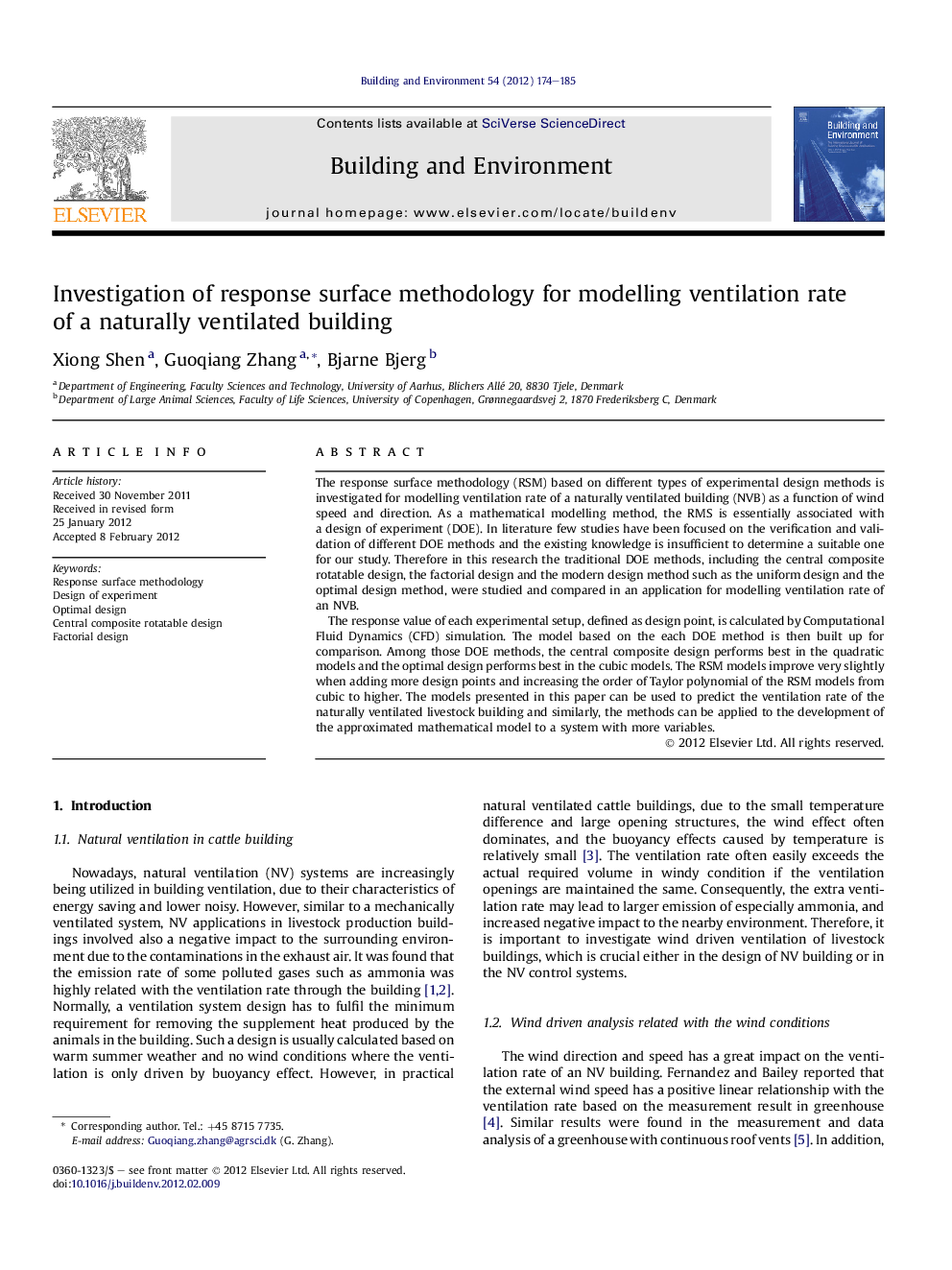| کد مقاله | کد نشریه | سال انتشار | مقاله انگلیسی | نسخه تمام متن |
|---|---|---|---|---|
| 248578 | 502575 | 2012 | 12 صفحه PDF | دانلود رایگان |

The response surface methodology (RSM) based on different types of experimental design methods is investigated for modelling ventilation rate of a naturally ventilated building (NVB) as a function of wind speed and direction. As a mathematical modelling method, the RMS is essentially associated with a design of experiment (DOE). In literature few studies have been focused on the verification and validation of different DOE methods and the existing knowledge is insufficient to determine a suitable one for our study. Therefore in this research the traditional DOE methods, including the central composite rotatable design, the factorial design and the modern design method such as the uniform design and the optimal design method, were studied and compared in an application for modelling ventilation rate of an NVB.The response value of each experimental setup, defined as design point, is calculated by Computational Fluid Dynamics (CFD) simulation. The model based on the each DOE method is then built up for comparison. Among those DOE methods, the central composite design performs best in the quadratic models and the optimal design performs best in the cubic models. The RSM models improve very slightly when adding more design points and increasing the order of Taylor polynomial of the RSM models from cubic to higher. The models presented in this paper can be used to predict the ventilation rate of the naturally ventilated livestock building and similarly, the methods can be applied to the development of the approximated mathematical model to a system with more variables.
► Response surface method was presented for modelling of a naturally ventilated (NV) building.
► Ventilation rate of an NV system was modelled as functions of wind speed and direction.
► Different methods of design of experiment (DOE) were tested for the model establishment.
► Traditional DOE method such as the central composite design shows good efficiency in modelling.
► Modern DOE method such as the optimal design performs better by adding more design points.
Journal: Building and Environment - Volume 54, August 2012, Pages 174–185